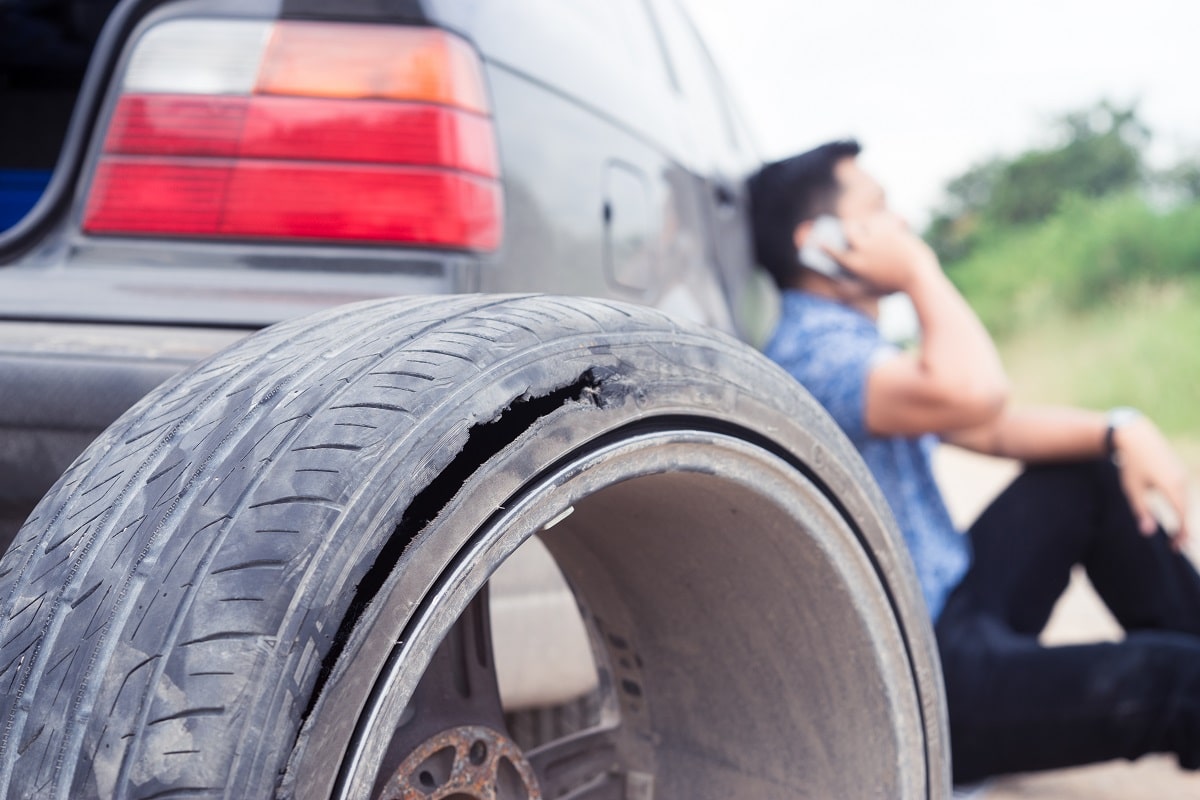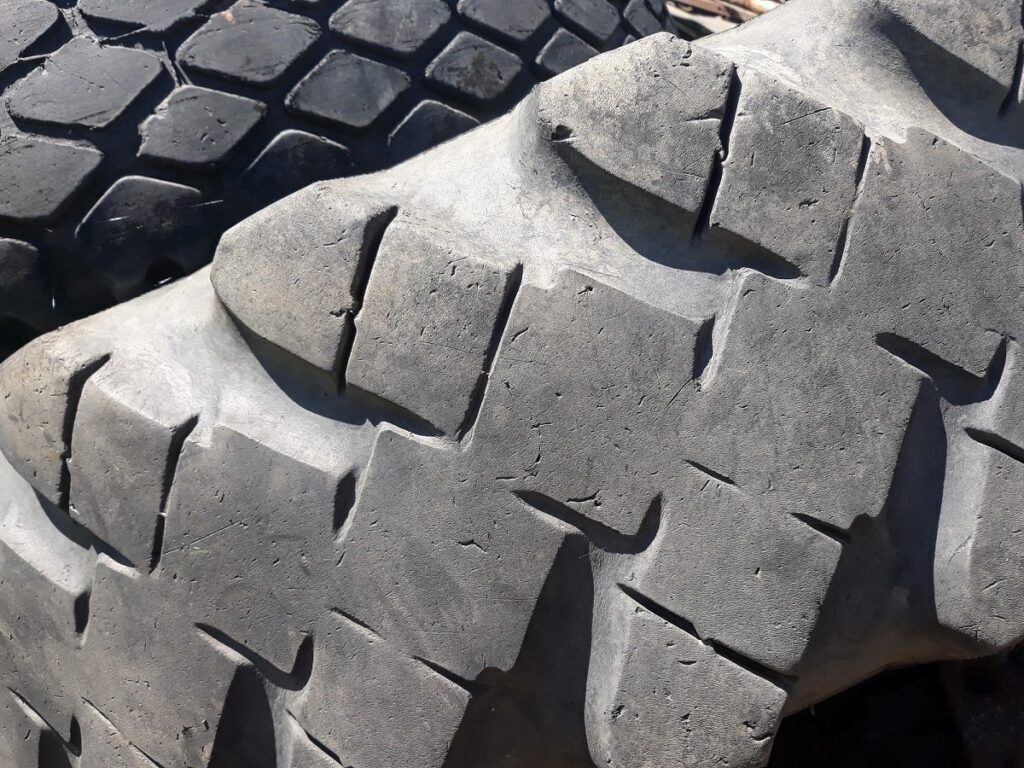Vehicle
When Should Tire be Replaced?


Tires are a driver’s only source of contact with the ground, transmitting the steering, braking, acceleration, and turning movements. They are one of the most vital safety features on a car, truck, or crossover since they are custom-made for each vehicle. Your safety, the protection of other road users, and your comfort and fuel economy are all dependent on the tires. Tires made of rubber that are pliable and packed with compressed air consist of mainly seven parts. The belts, sipes, tread, grooves, shoulder, sidewall, and inner liner, and each component performs particular tasks to have a quality tire. Though tires have considerable durability, eventually, they will wear out, making the driving less secure. So it is vital to know about tire replacing. When should the tire be replaced? This article here discusses the essential facts related to tire replacement. Readout to find out.
Identifying a worn-out tire
Before getting familiar with the facts related to tire replacement, you should first identify a worn-out tire. How do you tell if your vehicle tires have worn out? Badly worn tires are unsafe and perform significantly worse while braking or cornering. The initial step is to take a quick look around the tire.
Method to identify
Although the typical new passenger tire has between 8 and 12 millimetres of tread, the minimum norm is 1.5 millimetres depending on the size. If your tires’ tread is less than this, you will face a fine. When looking for minimum tread, keep in mind that it refers to the lowest level of tread available, not the maximum. Some tires can wear unevenly, mainly if your wheel alignment or air pressure is not proper. The method of determining a tire’s wear is relatively straightforward.
Both passenger and 4×4 tires have a treadwear indicator built into them. This indicator locates between the tread ridges of the tire. These small ridges can be difficult to spot, mainly if your vehicle is low to the ground and has low-profile tires. Manufacturers often mark the tire’s sidewall with an arrow, their logo, or another identifying mark to showcase the location of the signs if you cannot see the face of the tire.
These marks will evenly space around the circumference of the tire. If your tire tread is level at every point with these indicators, the tread depth is less than 1.5 millimetres, and it is time to replace your tires. The bars may flush with the tread surface when the tire has worn to the legal limit of 1.5 millimetres. According to studies, every millimetre of the tread that wears out from your tires increases your stopping distance significantly. Therefore it is best to replace the tires before they become completely worn out.
When should you replace tires?
It is better if you replaced your tires when
- They become worn out with a tread depth below 1.5 millimeters (the legal limit)
- They aged
How long do tires last on average?
“It depends,” is the simple response. A typical collection of tires should last around four to five years or 60,000 to 75,000 miles. There are many reasons for the ageing of your vehicle tires. Some of them are as follows
- Your driving style: Tire wear increases by rotating the wheels when accelerating or locking them when braking
- Bad road conditions
- Alignment: Tires can wear out quickly and unevenly if the alignment is incorrect
- Speed: Driving at high speeds raises the temperature and wear on the tires
- Position: Front-wheel-drive vehicles usually have more wear on the front tires.
- Load: Excess load will increase tire wear
- Pressure: One of the most vital things you can do to care for your tires is to keep the proper inflation pressure. Wear increases by both under and over inflation.
How many miles can you put on tires before replacing them?
Again there is no concrete answer to this question. The number of miles that your tires can run before a replacement depends on the factors mentioned above. However, in general, a tire has a 50,000-mile life, according to the manufacturer’s estimate.


Does it need to replace tpms when replacing tires?
Tire Pressure Monitoring Systems (or TPMS) consist of sensors positioned on the wheels or the valve stems. Potholes, debris, and the weather may cause tire pressure sensors to wear out or be damaged, necessitating their replacement. Furthermore, the TPMS electronics will fail. When the sensors or other elements of the device fail, a TPMS warning light should blink. The sensors send radio signals to a control unit, and the TPMS signals sometimes interfere with other radio transmissions on the same frequency, resulting in a malfunction warning.
After adjusting or installing new tires or wheels, most tire shops and repair shops recommend servicing the TPMS. It includes removing the valve core, retaining nut, seal, and cap on the valve stem. Then checking the mechanism to ensure it works properly. After modifying or repairing tires on many cars, the TPMS must be electronically reset. On some, travelling a certain distance resets the sensor automatically.
How often should tires be replaced?
According to the general rule of thumb, tires will last anywhere from 25,000 to 50,000 miles until they need a replacement. For detailed instructions that come with your vehicle, check the owner’s manual. When it comes to tire repair, it is easier to be safe than sorry. Even if you conduct one or more of these tests, you can always inspect your tires often to ensure that they are in good condition. It will extend the life of your tires and reduce the frequency at which you must replace them.
Mobile tire replacement
A bad or flat tire can be very inconvenient. If you need to drive the car to a nearby car tire change and repair location, it is much too exhausting. However, using a mobile tire replacement from a reputable service supplier, you do not want to drive to their destination. Instead of that, they will come in your footstep and make the necessary changes in the tire. This mobile service has many benefits as well. Furthermore, when using a mobile tire replacement service, you can save your time while staying clean, stress-free, and risk-free. It is also very cost-effective and can even get complete assistance from the service providers worth your payments.
Remember that tire failure can have a devastating effect on your life and the lives of those around you. It does not matter if you have the most strong car in the world if you do not have the right tires. During a tire replacement, it is best to replace all four tires at once, including the spare. Also, always try to stick with the same brand and model for all of them.








